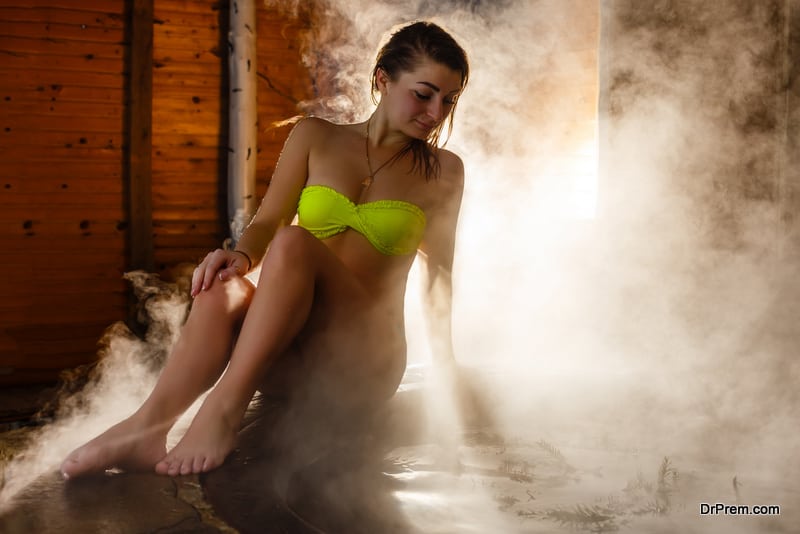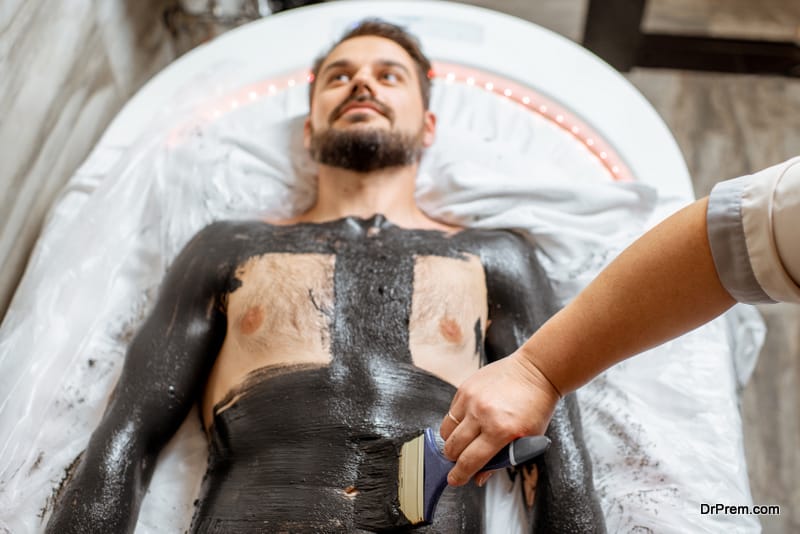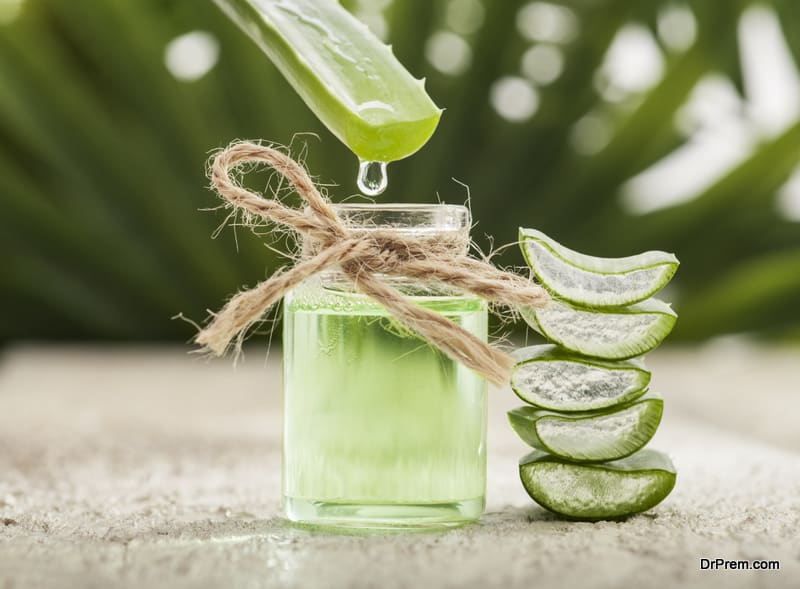Have you ever tested the healing power of water apart from drinking? Balneotherapy is the use of water to heal and it has been practiced for centuries. Over time, the processes have evolved.You will certainly be surprised to know how effective this therapy is, especially in natural spring water, for treating diseases and enhancing the quality of life.The benefits of balneotherapy are well-documented, and it is becoming increasingly popular as people look for natural ways to heal their bodies.
This guide will tell you how water is used in different forms to treat various health problems.
You will learn about the following:
A Detailed Guide on ‘Balneotherapy’ by Dr Prem – Concept, Benefits, Methods, Indications, Best Practices, Destinations and More
-
What is the Concept of Balneotherapy?
-
History of Balneotherapy
-
Principle of Balneotherapy
-
What are the benefits of Balneotherapy?
-
What are the types of Balneotherapy?
-
What methods are used in Balneotherapy?
-
What is commonly used in Balneotherapy?
-
Balneotherapy indications
-
What is the difference between Hydrotherapy and Balneotherapy?
-
What is Crenotherapy in Balneotherapy?
-
What are the Different Types of Crenotherapy?
-
What is Balneotherapy in psoriasis?
-
What do you mean by balneotherapy spa?
-
Who Should Avoid Balneotherapy?
-
Can you do Balneotherapy at home?
-
What are the best practices in Balneotherapy?
-
What are the best destinations for Balneotherapy?
What is the Concept of Balneotherapy?

The treatmentis considered a refreshing way of combating with stress in the form of bathing.Balneotherapy is usually practiced as a spa treatment, where mineral-packed water is used for the process.Balneotherapy involves all-natural substances and is far away from the use of any chemicals or potentiallyharmful drugs.
History of Balneotherapy

History also mentions Cleopatra (69-30 BC) who used to soak in the rich-mineral water of the dead sea for maintaining her legendary beauty. It was in the early 5thcentury BC when scientists began to look for the beneficial advantages of Balneotherapy in thermal baths. In the further years, more and more research took place to understand each mineral’s quality and its effect on our bodies.
As time passed by, the belief that natural thermal water may have cures for many diseases only grew stronger. The bathing culture was rapidly adopted by many during the 19th century. In today’s world, the innovation in thermalism for cure is joined with the concept of wellness. This raised the development of Balneotherapy in wellness resorts making it a significant feature of wellness tourism.
Principle of Balneotherapy

What are the benefits of Balneotherapy?

As per a studyperformed on a group of patients suffering from physical pain and anxiety, Balneotherapy has shown significantly effective results by acting as an analgesic for relieving pain and improving mobility. This has also raised the popularity of Balneotherapy in wellness tourism. However,it must be performed under a supervision of a trained therapist only.
Here are some of the amazing benefits you can expect after the therapy:
- Improves blood circulation
- Deeply cleanses pores
- Brightens skin
- Reduces Fibromyalgia pain
- Eases lower back pain
- Offers relief from arthritic symptoms
- Fights Psoriasis
- Fights Cellulite
What are the types of Balneotherapy?

Hydrotherapy –

Mud Therapy –

Crenotherapy –

Hydroponic Therapy –

Ichthyotherapy –

Spa Therapy –

What methods are used in Balneotherapy?

What is commonly used in Balneotherapy?

- Baths that contain thermal mineral water
- Water directly from the source of natural springs
- The temperature of the water used for the procedure is at least 20°C
- The mineral content in the water is at least 1g/L.37
- Specific salts.
Balneotherapy indications

- Muscle pains
- chronic diseases
- rheumatic ailments
- circulatory problems
- respiratory troubles
What is the difference between Hydrotherapy and Balneotherapy?

Some of the other benefits of Hydrotherapy treatment are pain reduction, low-impact efforts, improved mental health, relaxation, recovery from workouts, and prevention of sore muscles, etc. If you want to try out this therapy, you can easily find it under Balneotherapy in health resorts and spas. However, it is necessary to discuss suitable exercises for every individual with a doctor.
Hydrotherapy is done in different ways depending on the condition, they are:
- Warm water baths
- Aquatic exercises
- Saunas
- Water circuit therapy
- Wraps, fomentation, or compression
- Immersion therapies
What is Crenotherapy in Balneotherapy?

For external absorption of this medical water, certain methods like mobility pool, spray pool, mud poultice, aero bath, water massage, and get sprays are used depending on the suitability and requirement of the patient.
Drinking mineral water treatments are one of the oldest therapies in the world. Therefore, you can find the practice of Crenotherapy in health and wellness resorts, wellness programs, and spas all over the world. The efficiently dosed water provides many benefits altogether. The therapy regulates the proper functioning of the bowels, liver, stomach, and kidneys and is found to be very effective in curing certain diseases.
The benefits provided by Crenotherapy are as follows:
- Cures diseases related to the respiratory, urinary, and digestive tract
- Reduces and manages digestive issues
- Boosts immunity and overall health
- Helps in improving mental health
- Treats gastric and intestinal-related problems
What are the Different Types of Crenotherapy?
-
Salt waters –

-
Aloe Vera –

-
Milk or Whey –

-
Healing Clay –

What is Balneotherapy in psoriasis?

According to a study report, Balneotherapy has shown a significant decrease in PASI (Psoriasis Area Severity Index) with a reduction of staphylococcus aureus colonization and enterotoxin N and interleukin-8. As a matter of fact, applying different kinds of peloids or mineral water on the skin exerts thermal, chemical, and mechanical effects. The visible and effective reduction in inflammation and better differentiation of keratinocytes is what explains why Balneotherapy is considered to be helpful for psoriatic patients.
Also, the immunomodulatory effects of the water will depend on the contents in it. Sulfur water has antipruriginous, anti-inflammatory, and keratolytic effects along with antifungal and antibacterial properties. The evidence for the effectiveness of this therapy has been found in many research studies conducted globally. Major studies to test these effects were performed at the coast of the Dead Sea. These have clinically proven the importance of Balneotherapy for the treatment of patients with psoriasis.
Balneophototherapy

It manages the symptoms of the disease by slowing down the production of skin cells and reducing skin inflammation.The treatment is also beneficial for associated chronic psoriasis arthritis.
Important Note– Balneophototherapy is not advised for patients with Systemic Lupus Erythematosus or SLE, or those with skin malignancies, photoaggravated dermatoses, or immunodeficiency syndrome.
What do you mean by Balneotherapy Spa?

- Salt water bathing – The water used is either naturally salty or some bath salts may be added
- Spring water bathing – Water from natural spring water sources suitable for various health problems
- Sulfur bath – Spring water that has a high amount of sulfur
- Oil bathing – Addition of herbal oils in the water
- Mud bath – Mud full of minerals minimally water-downed with the spring water
- Watercourse or exercise – Water-based exercises or swimming in large pools with countercurrent channels for required bodily movements
- Partial bath – Some selected specific parts of the body are only bathed
- Alternative hot-cold bath – Some time to be spent in the warm pool followed by a quick dip in the cold pool. The process is repeated
- Inhalations – The healing water is evaporated and the steam is inhaled through the airways
- Mineral water drinking – Only a few suitable types of spring water are used internallythrough various kinds of drinkables
Who Should Avoid Balneotherapy?

In case, the below-mentioned conditions apply to you, make sure you discuss it with your doctor or therapist to analyze if Balneotherapy is safe for you:
- Open cuts, wounds, or sores
- Allergic to any oils, salts, or herbs
- Heart disease
- High blood pressure
- Diabetes
- Arteriosclerosis
- Epilepsy
- Recent stroke or attack
- Severe anemia
- Severe hypertension or hypotension
- Drug or alcoholic intoxication
- Severe psychiatric disorder
- Pregnancy
Can you do Balneotherapy at home?

Here is how you can do Balneotherapy at home:
- You will need to prepare water in the tub. The temperature of the water must be between 98.6° F and 107° F. For instance, if you need to treat fatigue or stimulate your body then 98.6° F is ideal and if you want to soothe your joints or muscles after an intense workout, you can keep the temperature as high as 107° F.
- The minerals and salt that can easily be used for balneotherapy at home are sea salt and Epsom salt. These can be added in the amount of 1 to 2 cups in the water for a standard-sizedbathtub.
- Once the water is prepared, you can soak yourself in it for at least 15-20 minutes to gain benefits from this therapy. Make sure that you are fully soaked in the water to your neck. In case of any heart or respiratory problems, consult a doctor before performing the therapy.
- Some people like to add essential oils while performing it at home. Please note that the added oils may not mix with the water and hence may not be of any benefit. However, those who would like to obtain the benefits of essential oils can opt for aromatherapy which allows you to inhale their vapors.
- It is highly recommended not to stress your mind or body immediately after you are done with the bath. You could slip into a robe and rest. Either you can lie down or meditate if you prefer to sit for at least 10-20 minutes. Once you feel relaxed and ready to start with your daily routines, you can gradually get back to it.
What are the best practices in Balneotherapy?

Some of the best practices are done in naturally got springs, seawater, or mud. You can find these revitalizing treatments of Balneotherapy in thermal tourism, thermal spa centers, and wellness resorts. These are commonly done to promote relaxation, improve blood circulation, stimulate the immune system, and reduce pain.
What are the best destinations for Balneotherapy?

Some of the best destinations for Balneotherapy are:
- Onsen – Japan
- Kurort – Europe
- Thermal springs – United States
- Turkish Bath – Turkey
- Wen Quan – Taiwan
Summary
Balneotherapy is the use of water in any form to provide relief from certain ailments and for stress relaxation. This therapy provides relief to the body’s muscles and tissues, relieves pain, and provides nutrition to all parts of the body. It has great stimulating effects and helps to improve the vital functions like circulation, digestion, and enzyme secretion. This therapy also aids in producing a soothing effect and helps to relax the body and the mind. It can help to improve glandular functions and helps to boost immunity. However, it is necessary to remember that Balneotherapy must be carried out only after ensuring its suitability and under the supervision of a certified and trained therapist.










